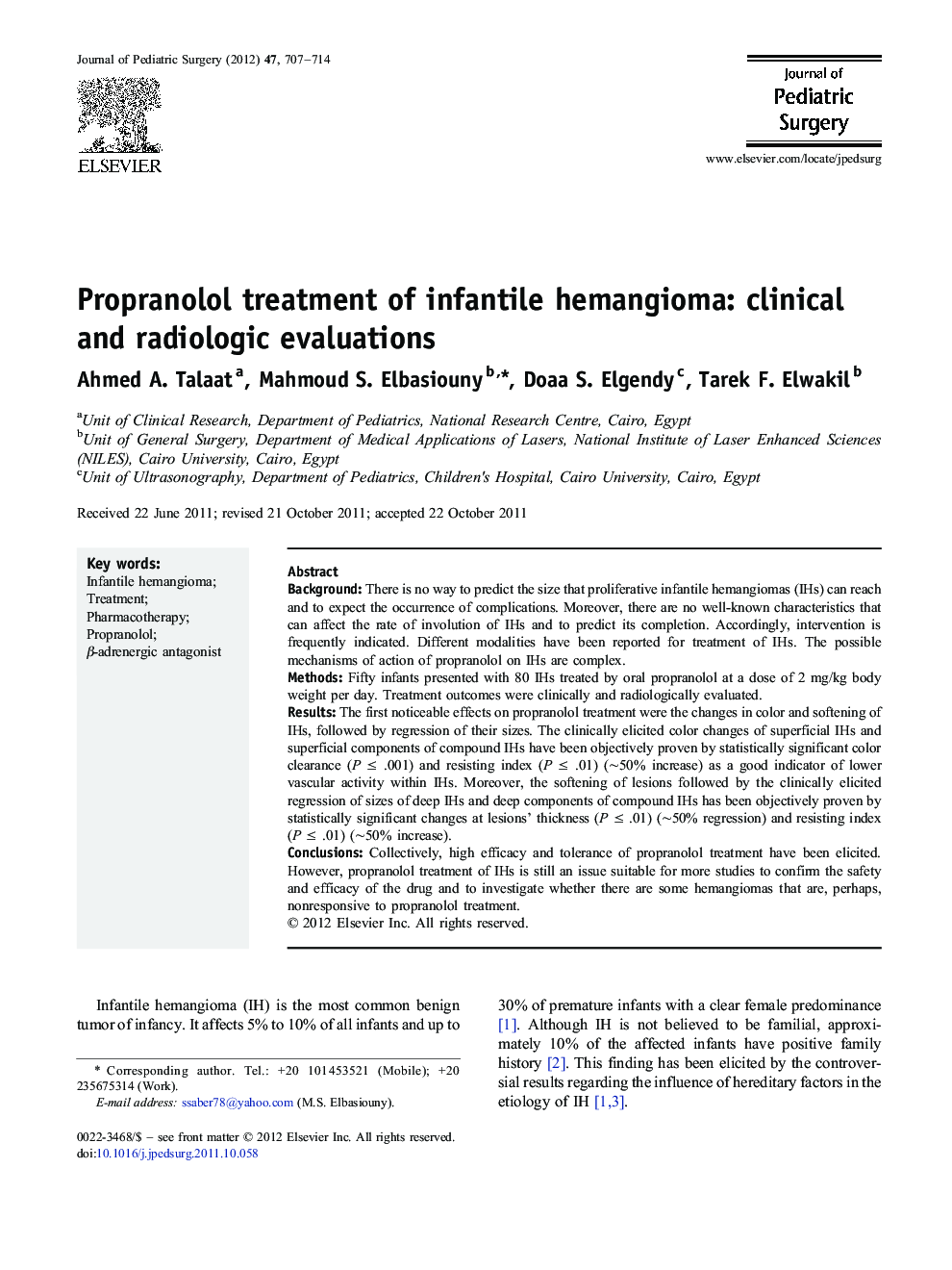| Article ID | Journal | Published Year | Pages | File Type |
|---|---|---|---|---|
| 6217242 | Journal of Pediatric Surgery | 2012 | 8 Pages |
BackgroundThere is no way to predict the size that proliferative infantile hemangiomas (IHs) can reach and to expect the occurrence of complications. Moreover, there are no well-known characteristics that can affect the rate of involution of IHs and to predict its completion. Accordingly, intervention is frequently indicated. Different modalities have been reported for treatment of IHs. The possible mechanisms of action of propranolol on IHs are complex.MethodsFifty infants presented with 80 IHs treated by oral propranolol at a dose of 2 mg/kg body weight per day. Treatment outcomes were clinically and radiologically evaluated.ResultsThe first noticeable effects on propranolol treatment were the changes in color and softening of IHs, followed by regression of their sizes. The clinically elicited color changes of superficial IHs and superficial components of compound IHs have been objectively proven by statistically significant color clearance (P ⤠.001) and resisting index (P ⤠.01) (â¼50% increase) as a good indicator of lower vascular activity within IHs. Moreover, the softening of lesions followed by the clinically elicited regression of sizes of deep IHs and deep components of compound IHs has been objectively proven by statistically significant changes at lesions' thickness (P ⤠.01) (â¼50% regression) and resisting index (P ⤠.01) (â¼50% increase).ConclusionsCollectively, high efficacy and tolerance of propranolol treatment have been elicited. However, propranolol treatment of IHs is still an issue suitable for more studies to confirm the safety and efficacy of the drug and to investigate whether there are some hemangiomas that are, perhaps, nonresponsive to propranolol treatment.
